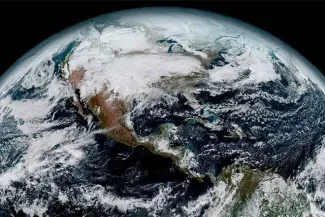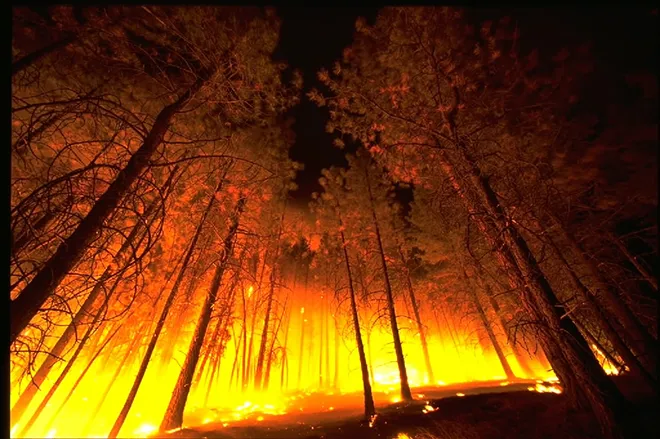
EarthTalk - How has the human footprint on Earth changed over time?
©
Dear EarthTalk:
How has the human footprint on Earth changed over time?
B.K, via e-mail
The term “human footprint” has become ubiquitous in modern environmental discourse, but to understand its impact today, one must understand how exactly this footprint has changed. The human footprint is defined today as the “energy quantities, resources and products consumed by a human during [their] lifetime,” according to researchers Čuček et al. The first archaeological evidence of a significant human footprint is from 6,000 years ago. Heather Thakar, an assistant professor of anthropology, and his team found that “42 percent of the regions examined had some form of agriculture” at that time, with the true beginnings of agriculture occurring earlier.

© NOAA's National Ocean Service
However, with increased human innovation and technological progress, the ways in which humanity shaped the environment began to expand. According to the Human Journey, a project of The Institute for the Study of Human Knowledge, the Scientific Revolution challenged previous norms about the importance of religious thought and generated “mechanistic attitudes.” Many believed nature could be “improved” by human innovation and promoted agricultural techniques that would soon contribute to massive industrial farming practices. As technical innovations continued to develop across various fields of application, the Industrial Revolution was soon brought about by the creation of steam-powered engines, leading to flourishing production rates and mechanical advancements, like the internal-combustion engine. Many of these advancements were powered by coal, a fossil fuel.
As humans continued to use machinery powered by fossil-fuels (like oil and gas) and carry out agricultural and industrial processes (like mining or waste processing), they released greenhouse gases. The most harmful ones, carbon dioxide (CO2), methane and nitrous oxide, trap heat in Earth’s atmosphere. The World Meteorological Organization now reports that the last time such CO2 levels were present was three to five million years ago, when the world was two to three degrees Celsius hotter.
Greenhouse gases continue to be released through various processes worldwide, contributing to climate change, and as its effects become increasingly pervasive, they raise concerns about the harmful, growing impact of the human footprint. Climate change leads to extreme weather, including wildfires, hurricanes and floods, affecting not just humans but animals as well, reducing biodiversity and ruined ecosystems.
There are ways to mitigate these effects, like moving to wind or solar power, using public transit, and engaging in conservation efforts. It is now humanity’s obligation to turn things around.
CONTACTS
- NASA’s The Human Footprint, earthdata.nasa.gov/news/feature-articles/human-footprint
- Study Shows How Humans Have Transformed Earth, And Still Do, https://stories.tamu.edu/news/2019/09/16/study-shows-how-man-has-transformed-earth-and-still-does/.
EarthTalk® is produced by Roddy Scheer & Doug Moss for the 501(c)3 nonprofit EarthTalk. See more athttps://emagazine.com. To donate, visit https://earthtalk.org. Send questions to: question@earthtalk.org.

















